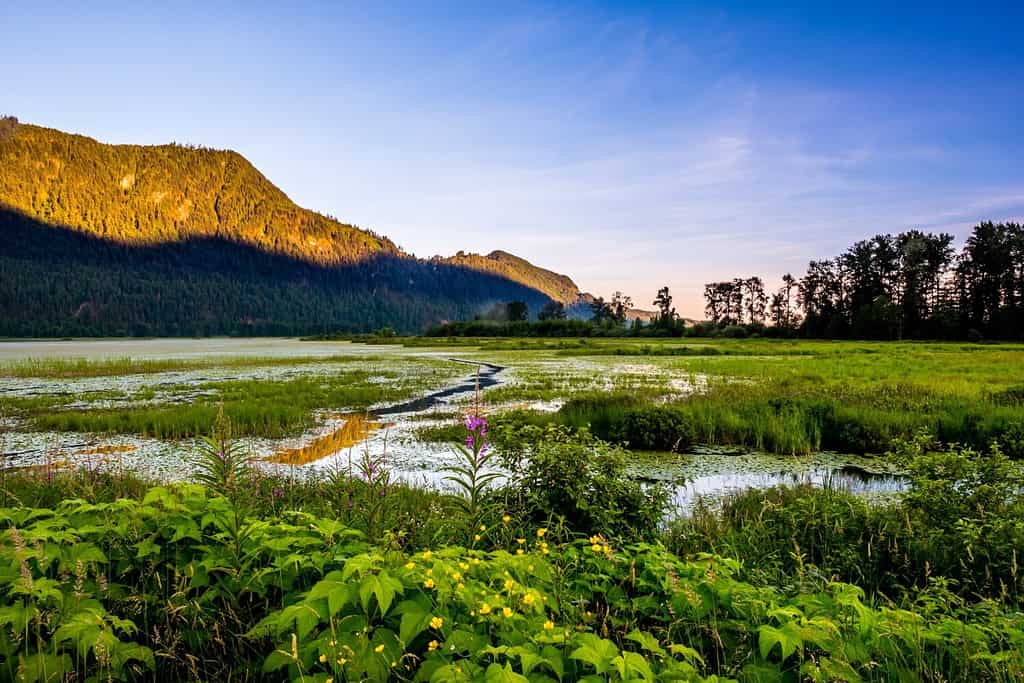
The importance of wetlands is quite varied. Wetlands are unique habitats that house a range of interesting flora and fauna.
©Michael Xiaos/Shutterstock.com
Wetland habitats are very important for people, animals, and the environment in an assortment of ways. This is why there is such a push to spread the word about the importance of wetlands by animal lovers and scientists throughout the world.
Many animals rely on these wetlands to survive. While many people do not realize it, the safety of their community and home depends on these wetlands. It’s also a habitat that makes for ideal hunting and fishing.
To learn more about the importance of wetlands and the animals that live there, continue reading below.
What Are Wetlands?
Wetlands are areas where water covers the soil. The water may cover the soil for the entirety of the year or a few seasons a year. One of the main characteristics of wetlands is hydrophytes. Hydrophytes are aquatic plants that have adapted to survive in certain environments. Even if wetlands are only wet for a part of the year, there should be some of these aquatic plants.
Where Can You Find Wetlands?
Wetlands are on every continent except for Antarctica. They are found in almost every habitat including the tropics and tundras.
There are two main types of wetlands. The first is the coastal or tidal wetland. These are found most often along the coast. They are made up of any ratio of saltwater to freshwater. They play a vital role and work closely alongside estuaries. These wetlands are a harsh environment due to the constantly fluctuating water levels. Still, many animals and some plants have adapted and now call these wetlands their home.
Inland wetlands are the other type. These wetlands are often found alongside rivers and streams in floodplains. To be considered wetlands, they must be an isolated depression in the ground surrounded by dry land. Marshes, wet meadows, and swamps all count as inland wetlands. Many of them are seasonal, or at least dry out for one season a year. They may also be dry more than they are wet.
Even these pools that are dry for most of the year, such as vernal pools, are important habitats. Some animals have adapted to breeding only in these areas.
The Importance of Wetlands for the Environment, People, and Animals
Wetlands aren’t just interesting habitats. They play a vital role in the environment and benefit both people and animals that live near these systems.
Environment
Wetlands improve the surrounding environment in many different ways. Because they hold excess rain during wet seasons, they can protect the nearby areas from flood damage. They also help to stop shoreline erosion by acting as a barrier and slowing down water.
Another benefit of wetlands all around the world is that they improve water quality in their surrounding area. Pollutants get caught in wetlands as they wash over the area. Then, the wetland uses physical, chemical, and biological processes to immobilize, break down, or trap many of the pollutants. Even when the wetlands dry out for the season, the pollutants are still trapped in the soil or plants underneath the water.
People
The importance of wetlands extends to people as well. They increase animal diversity and species richness. This means they make valuable areas for wildlife viewing and fishing. They are also great areas for recreational watersports and hiking.
There are more practical benefits as well. Because wetlands help reduce flooding, they are great for people who have homes located on floodplains or near the coast or the riverbank where there’s a high risk of their homes getting damaged by wetlands.
Animals
Wetlands are home to thousands of unique plants and animals. Some animals only use these habitats as a place to rest, such as birds when they need a break from their migratory flight. Other animals use them all the time, making a safe space for themselves amongst all the plants.
Wetlands are a vital food source for many animals, especially those that tend to eat insects. A few animals have even adapted to only breed in wetlands. Without wetlands, some animals wouldn’t have a way to reproduce.
Threats to Wetlands
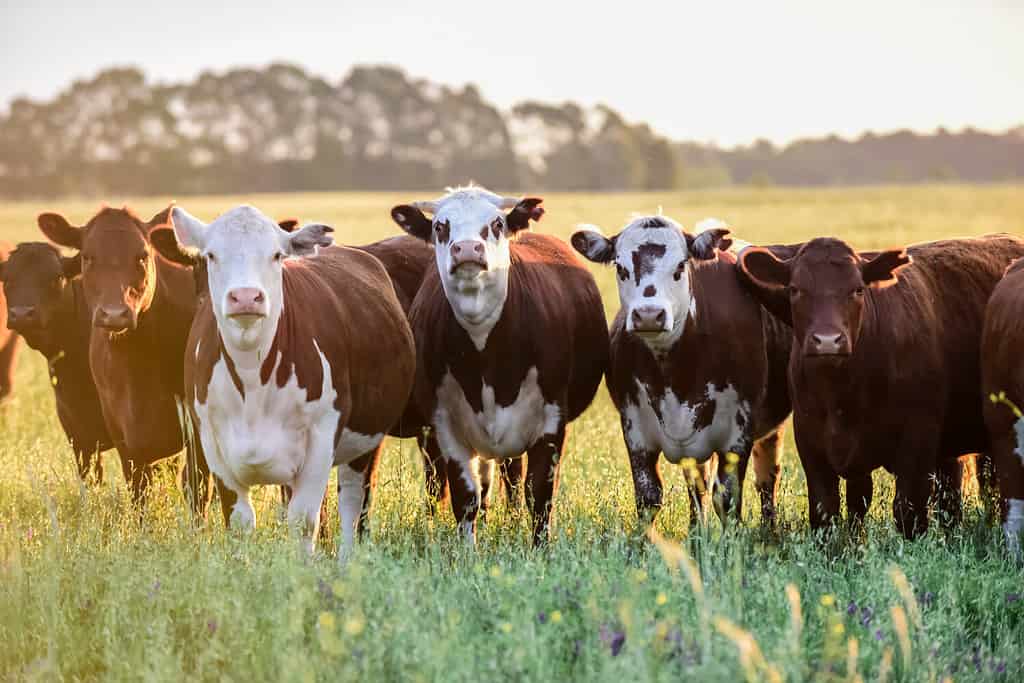
Cows are cute, and make for good food, but they harm the environment in a number of ways.
©Foto 4440/Shutterstock.com
Wetlands face threats on every side. Removing vegetation from the area, changing drainage patterns from rivers and streams, water level changes, construction, pollution, filling of an area, and fertilizers all have the potential to threaten vital wetlands. Livestock grazing, invasive plant and animal species, and drainage ditches also cause harm.
It’s estimated that by 2100, 75 percent of coastal wetlands could be lost. Wetlands are said to disappear at a rate three times faster than forests. Every year, 80,000 acres of wetlands are disappearing.
Governments everywhere are making efforts to slow the rate of loss as they learn more and more about the importance of wetlands. In some areas, they are making artificial wetlands in areas that are more protected from development. In other areas, restoration, incentives, and regulations are put into effect to promote awareness and benefits for people and companies that take steps to protect wetlands and reduce pollution.
Animals You Can Find in Wetlands
There are so many animals to find in wetlands. It’s a hub for prey species, predators, reptiles, amphibians, insects, mammals, fish, birds, and so much more. Now that you know the importance of wetlands, it’s time to see which animals make these habitats their home.
1. Frogs

The Indian
bullfrog
is one of many species of frog that rely on wetlands for food and habitat.
©Danielnasika1, CC BY-SA 4.0 – License
Bullfrogs, such as the Indian bullfrog, and treefrogs like the gray treefrog call wetlands their home, as well as many other types of amphibians. In wetlands, frogs have the chance to call for mating, while still having a quick escape under the water or into a patch of thick vegetation if a predator comes calling.
It’s also a good place to have tadpoles. There’s plenty to eat for adult frogs and young tadpoles throughout these habitats. Depending on the season the wetlands are wet, frogs will lay their eggs in the water and they have time to turn into fully grown frogs before the water dries out again.
2. Crayfish
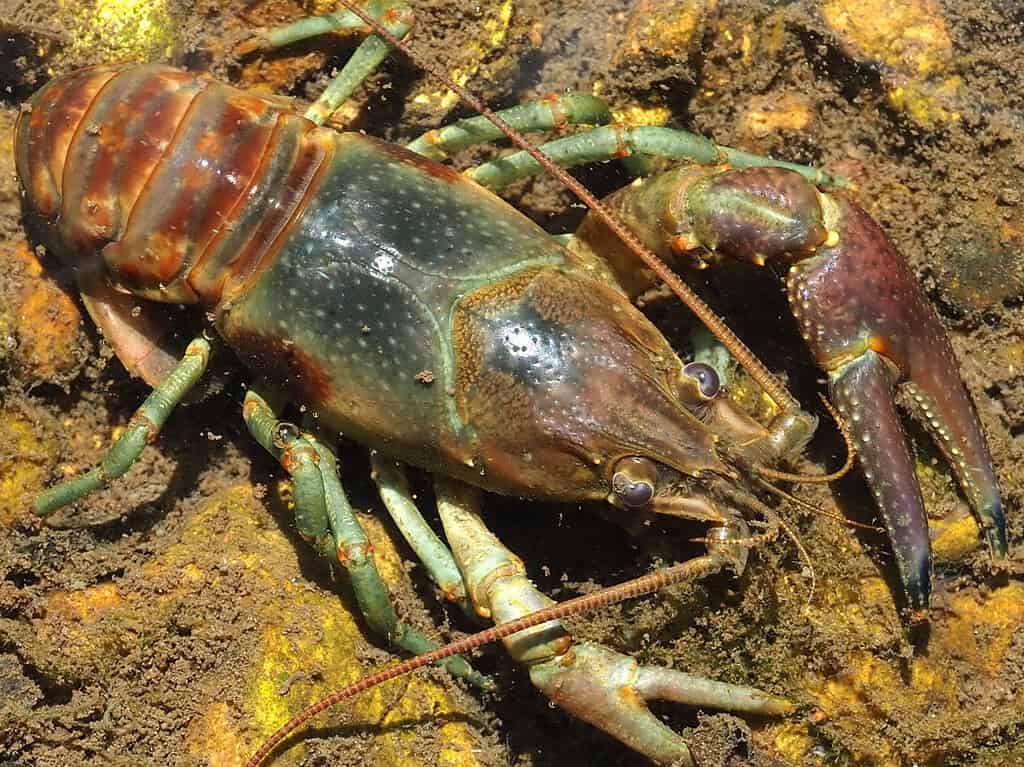
The rusty crayfish is named for its two rusty red spots on the sides of its back and front claws.
©Peterwchen / CC BY-SA 4.0, via Wikimedia Commons – License
Crayfish and other invertebrates understand the importance of wetlands. The water is often full of dead and dying plant matter. This is the perfect treat for these animals. In addition to food, the leaf litter creates the perfect place to live. Some invertebrates will burrow in the soil underneath a thick layer of plant material. Others live on the edge of the water and use the leaf litter there for their home.
For many other invertebrates, including those that live in the ocean, wetlands are essential nurseries. Clams, oysters, crayfish, and other shellfish and invertebrates depend on the specialized habitat making up wetlands to act as a safe space for their young until they are grown.
3. Butterflies
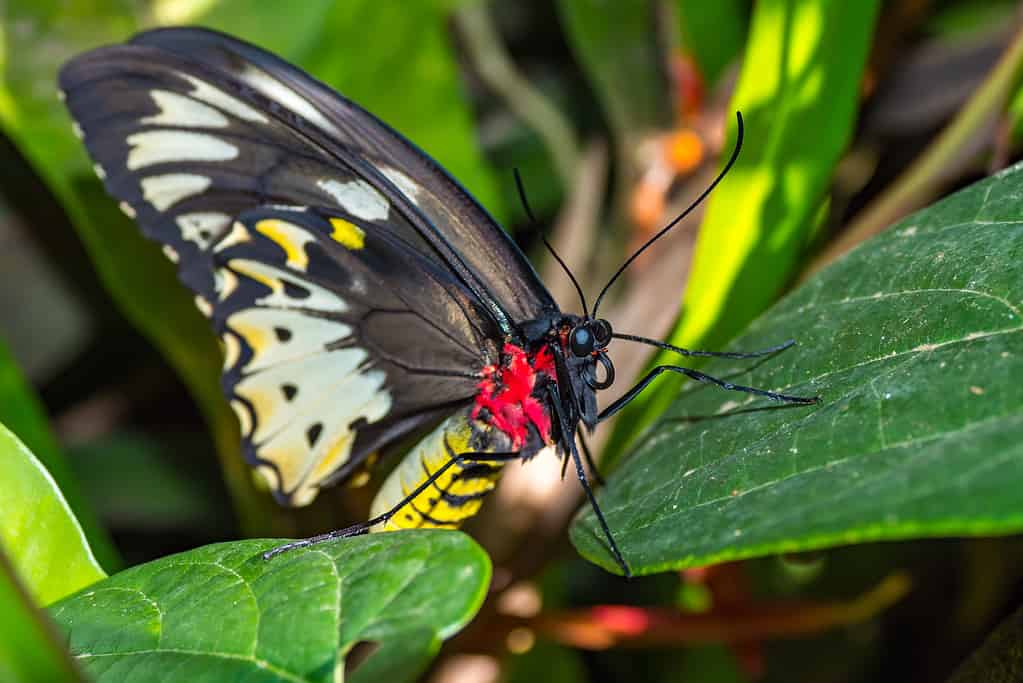
Butterflies are abundant in wetlands.
©MICHAEL WORKMAN/ via Getty Images
It’s common to find a lot of butterflies in and around wetlands. This is because the plants that make wetlands their home tend to be the perfect food for caterpillars. For example, water dock, common reed, and milk-parsley are all foods perfect to help a caterpillar get strong.
Some species of butterflies are known as wetland butterflies because of how closely they are tied to this aquatic habitat. Butterflies growing more at risk as their habitat shrinks include the Baltimore checkerspot and the Dion skipper.
4. Jaguars

The importance of wetland habitats is shown with not only prey species but larger predators like the jaguar.
©Charles Bergman/Shutterstock.com
The largest cats in the Americas depend on wetlands just as much as small frogs and crayfish do. Jaguars are an endangered species that has disappeared from more than half its range thanks to habitat loss and poaching. These wetland habitats are a vital safe space for these predators. They prefer to stay near water as they are faultless swimmers with powerful jaws to grab their prey even while swimming.
The two areas with the largest number of jaguars are the Amazon rainforest and the Pantanal. The Pantanal is the world’s largest freshwater wetland. Unfortunately, this wetland is also facing threats from high levels of deforestation and agriculture.
5. Manatees

Fondly referred to as sea cows, manatees are calm and adorable animals found in all bodies of water.
©Harry Collins Photography/Shutterstock.com
Manatees live in a wide range of habitats. They can be found in rivers, springs, swamps, marshes, wetlands, and estuaries. They are also found in several places around the world, including the Caribbean, the Amazon, Florida, and West Africa.
Manatees are already facing many threats and are marked as vulnerable. This is because they are facing habitat loss, climate change, pollution, pesticides, and algal blooms. There is also the issue of boats colliding with manatees and causing severe injuries.
6. Capybaras
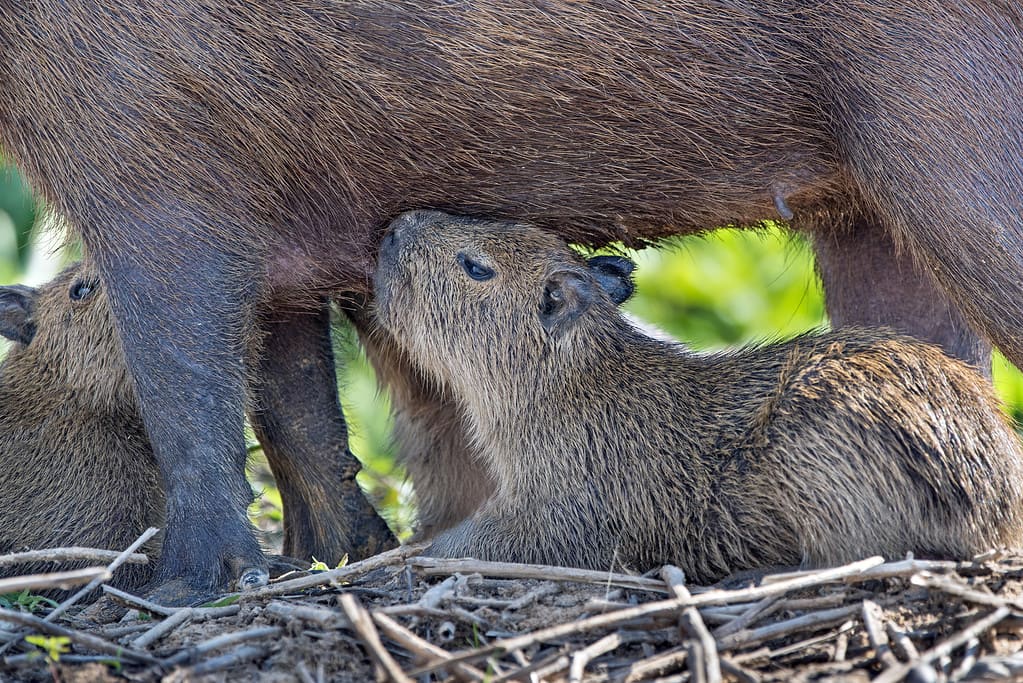
Capybaras nurse their babies communally to help ensure every baby gets fed.
©drferry/iStock via Getty Images
Despite their appearance, capybaras are closely related to guinea pigs. They are the largest of all rodents on earth and make their homes in different bodies of water. They enjoy marshes, ponds, flooded grasslands, and wetlands. These rodents are so well adapted to water that they have webbed feet to make swimming easier.
Having water around is essential for helping them get away from predators. They have many predators such as caiman, boas, and jaguars, so a quick escape is often needed.
7. Hippopotamuses
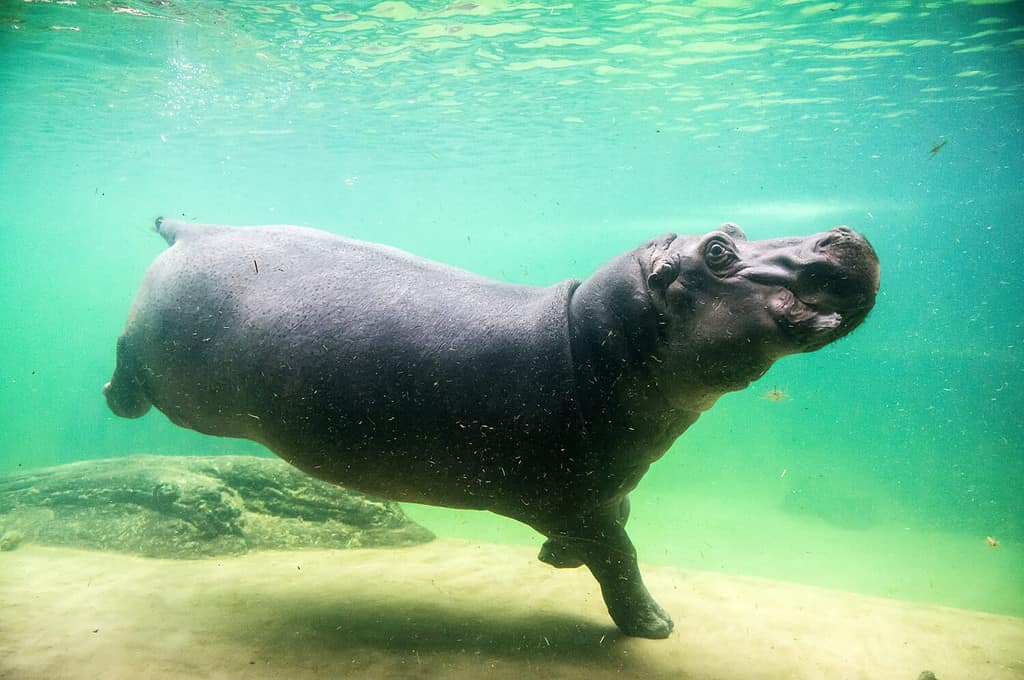
When you think of hippos, you may think of rivers, but they play an important role in wetlands as well.
©Lena Ivanova/Shutterstock.com
Hippos enjoy rivers and lakes, but they also make a point to visit local wetlands. Wetlands provide a lot of delicious food for hippos to graze on. However, it’s the hippos that benefit wetlands more than wetlands benefit hippos.
Hippos eat a lot of grass. As big as hippos get, that means they have to use the bathroom quite a lot. All of their poop is filled with natural fertilizer full of nutrients. These nutrients are released into the water, making it a perfect habitat for more plants and therefore more animals.
8. Flamingos

On average, flamingos can stand up to four hours using just one leg.
©Dr Ajay Kumar Singh/Shutterstock.com
No animal feels the importance of wetlands more than one large pink bird. Every one of the six species of flamingos depends on wetland habitats. Scientists are almost certain that without wetlands, there wouldn’t be any flamingos, as they are tied together so tightly. They’ve evolved together and flamingos have adjusted to fit a specific niche in the wetland to the point that it’s the only habitat they do exceptionally well in.
Flamingos thrive in the harsher wetlands the best. If there are wetlands with extreme toxicity or harsh water chemistry, you will be sure to find flamingos there. You might not expect these big, bright birds to be durable, but they handle extreme environments quite well.
9. Herons
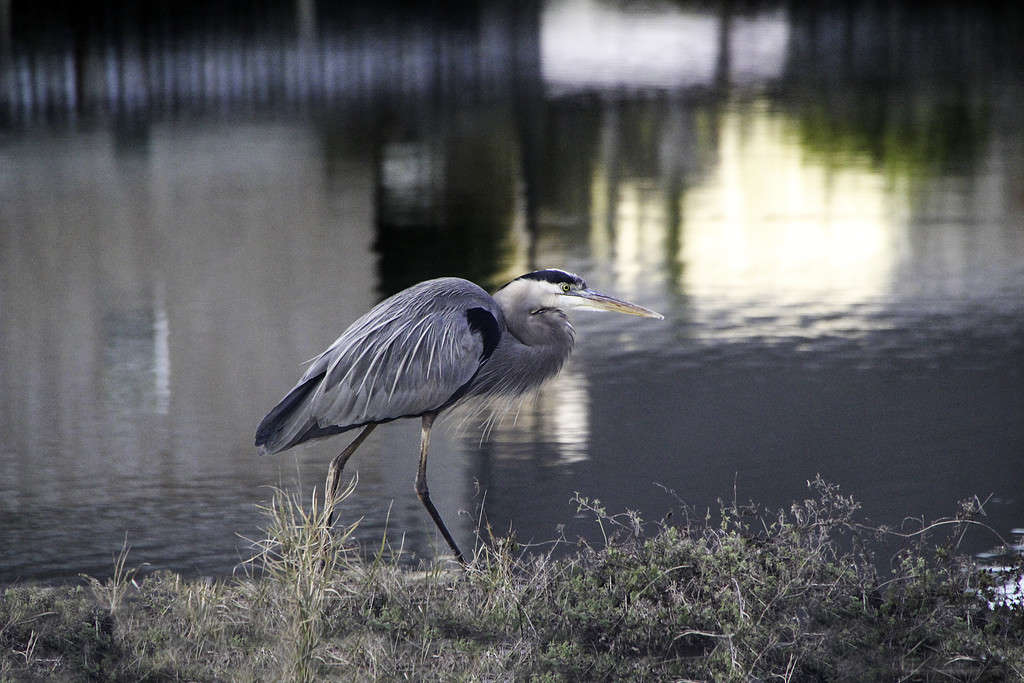
The Louisiana heron is among the many wildlife you will see near wetlands.
©Jill Meyer Millet/ via Getty Images
Herons are often found in wetlands, especially in the summer. They depend on these habitats for nesting and feeding. Great blue herons, for example, have a range that stretches from central Canada to South America. No matter where they are in this range, you’re likely to find them beside a wetland or waterway.
Many wetlands are fairly undisturbed, especially now that many are protected. This relative peace allows for breeding. In other waterways where herons might breed, traffic, logging, boats, and construction may disturb these birds and make it difficult for them to breed.
10. Bass

Bass depend on wetlands for survival in a variety of ways.
©Maclane Parker/Shutterstock.com
There are many fish that live in wetlands. Bass is one of these many kinds of fish. They use wetlands for spawning, nurseries, food, and cover. Smallmouth bass are one species of bass you can expect to find in wetlands throughout the US.
For smaller fish, the deeper areas of wetlands provide a sort of cover as it is too dark for some of their predators to find them. Most of the fish you’ll find in wetlands are small, though the occasional larger fish will make it there.
11. Trout
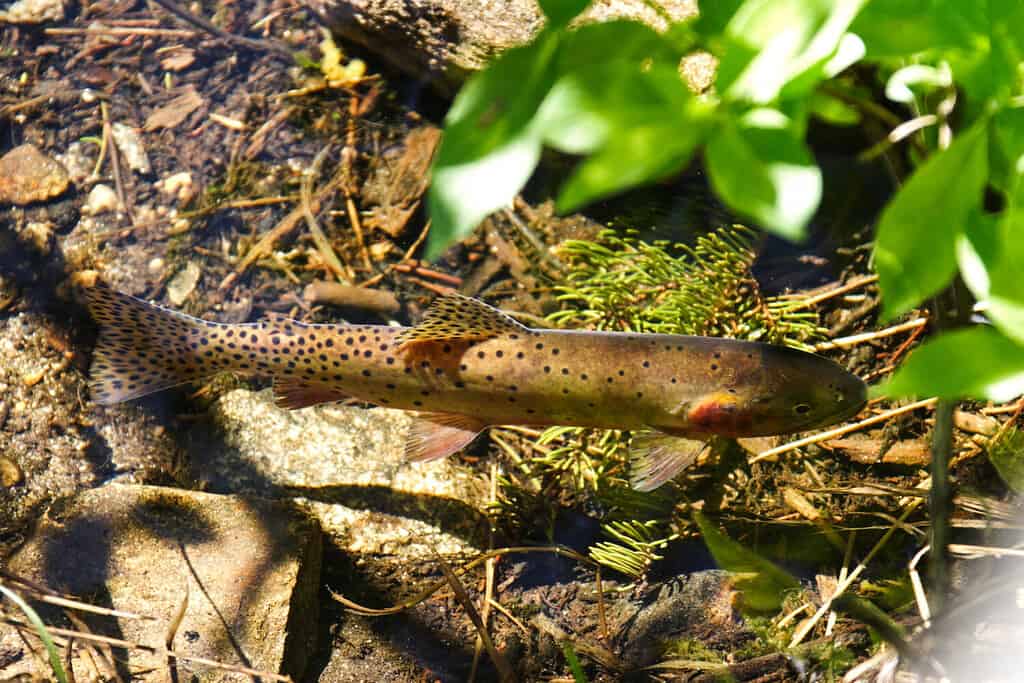
There are many fish that depend on wetlands for breeding, including trout.
©Gregory Simpson/Shutterstock.com
A few species of trout can be found in wetlands at various times of the year. Sea trout rely on wetlands for their spawning grounds. Without them, sea trouts would be in a lot of trouble, and not be able to increase their population as needed.
Even river trout, that don’t depend on wetlands for spawning, benefit from these important bodies of water. Wetlands, especially up north, provide cold, clean water in a continuous supply from mountain snowmelt. Trout, which depend on cooler waters to survive, need the wetlands that hold cooler water.
12. Skinks

These little lizards look like a mix between a snake and a lizard, as they often have small or absent limbs.
©Jason Mintzer/Shutterstock.com
Skinks are animals that not only make wetlands their home but need them to survive. Wetlands provide vital food sources for these lizards, such as grubs and insect larvae. The dense underbrush and foliage near the water also allow for protection from predators.
Most skinks live in locations that are humid and have low elevations. However, the alpine skink and the Blue Mountains water skink manage to survive high altitudes quite well.
13. Water Dragons
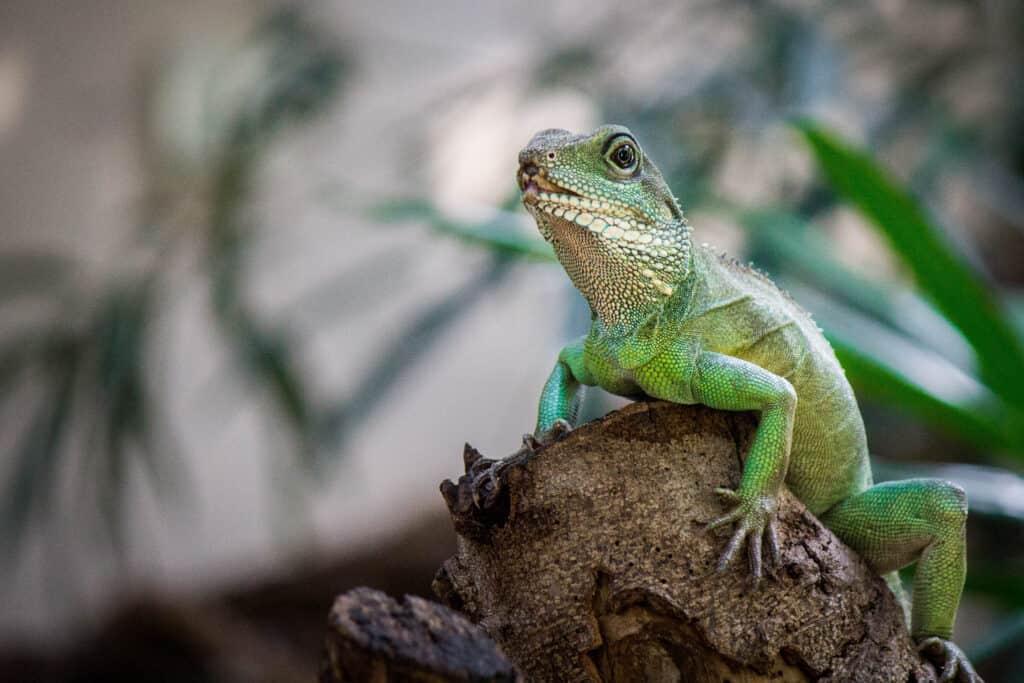
A type of lizard you might see in wetlands includes water dragons.
©Robin Nieuwenkamp/Shutterstock.com
Water dragons are a type of lizard. They are called water dragons because they are excellent swimmers. They are also great at climbing. These lizards can stay under the water to avoid predators for close to 25 minutes.
These are a very aggressive type of lizard. Even with each other. When aggravated, the species will raise their arms and puff up their throats. There are two main species of water dragon, the Chinese water dragon and the Australian water dragon.
14. Platypus
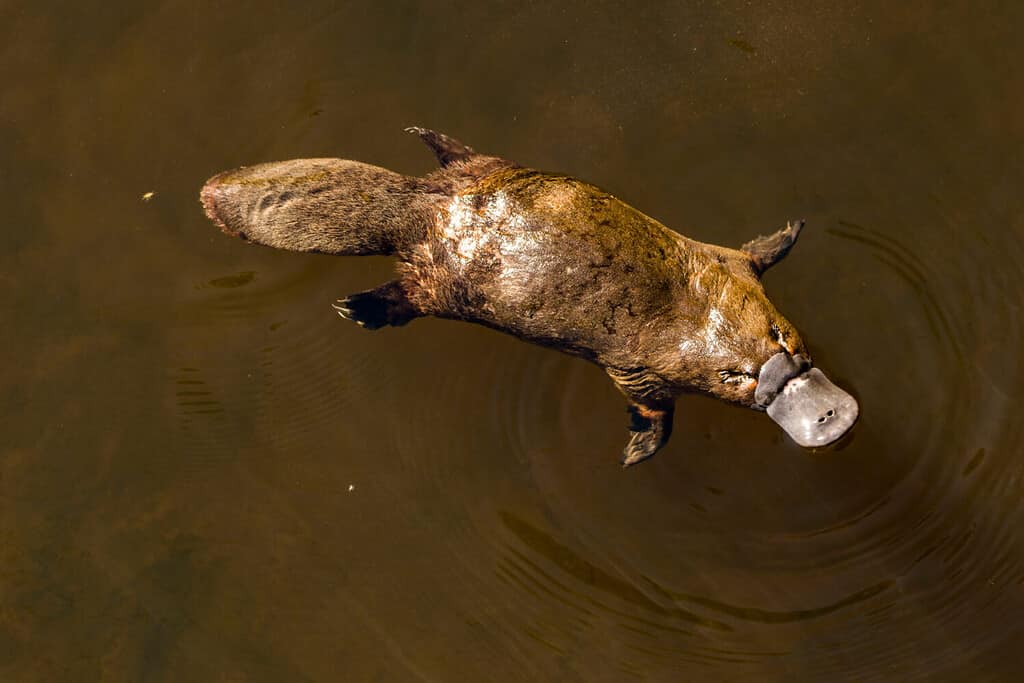
These mammals are unique creatures that have characteristics of several different groups of animals mashed together.
©Lukas_Vejrik/Shutterstock.com
A platypus is an animal that lives solely in Australia. They belong to a group of mammals known as monotremes, which only include a few species. Platypi enjoy all bodies of water, including wetlands.
Other bodies of water where you can find a platypus include slow-moving rivers and creeks, estuaries, lakes, and dams. They rely on these bodies of water for their food, which is made up of aquatic insects in the water. They usually live alone, but you sometimes see a few platypi in the same body of water.
15. Bats
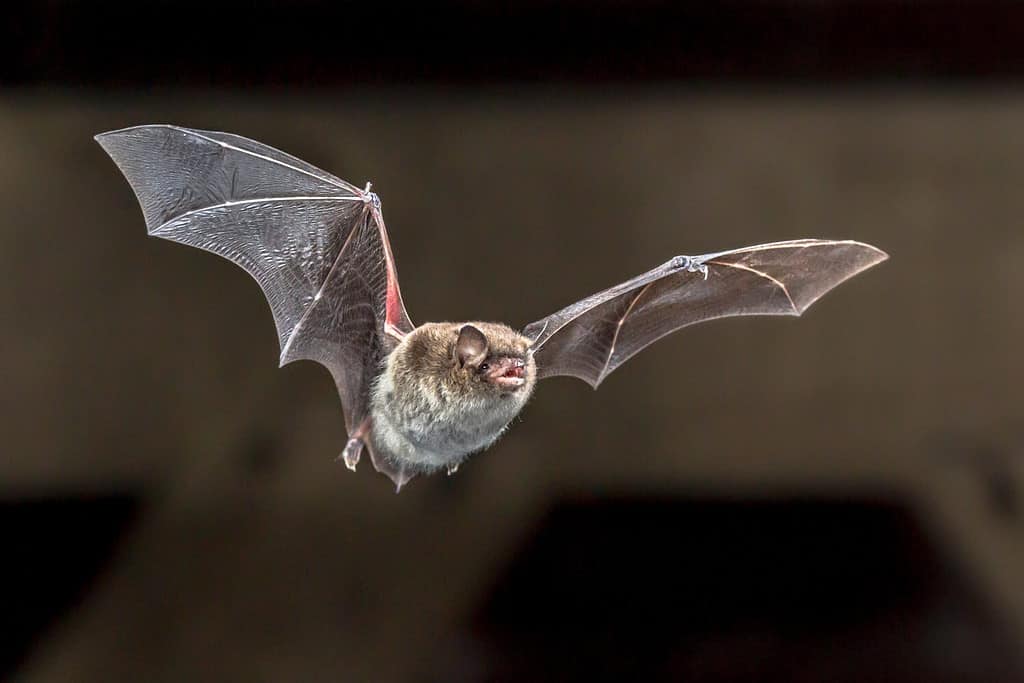
Some studies suggest that bats and wetlands help each other out.
©Rudmer Zwerver/Shutterstock.com
Bats also make wetlands their habitat. The common blossom bat and the fishing bat are two examples of bats you can find in wetlands if you keep an eye out. They usually live in caves, bridges, or tree hollows near wetlands.
With plenty of insects around, it’s a perfect place for bats. However, it’s not just bats benefiting. Studies show that wetlands benefit from having bats around as it helps to reduce prey densities. There are only a few studies done on this interaction so far, so more research needs to be done to confirm the relationship.
16. Rats
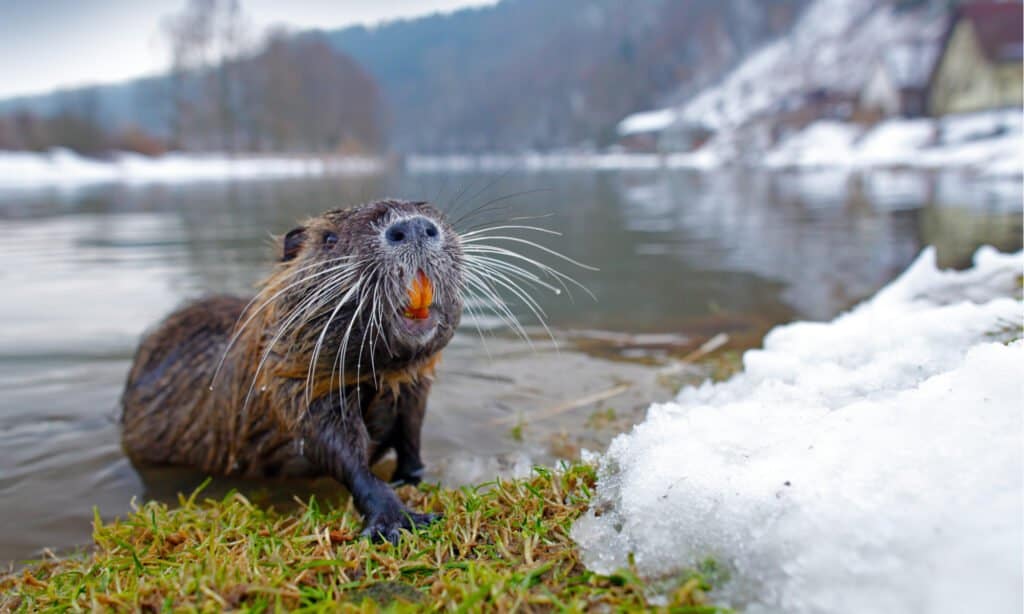
Nutrias are one of several ‘rats’ you’ll find living in wetlands.
©Ondrej Prosicky/Shutterstock.com
Swamp rats (also known as nutrias) and the common water rat (rakali) are two animals you’ll likely find hanging out in wetlands. They tend to make a habitat from the dense foliage along rivers and streams.
Common rats and mice, like the pale field rat, also enjoy visiting and living in wetlands. The dense habitat is often dense enough to allow these small rodents to avoid predators while also providing them with plenty of water and food.
Summary of the Animals You’ll Find in Wetlands
| Rank | Animal | Examples of Species or Subspecies |
|---|---|---|
| 1 | Frogs | Indian bullfrog, Gray treefrog |
| 2 | Crayfish | Rusty crayfish, Signal crayfish |
| 3 | Butterflies | Dion skipper, Baltimore checkerspot |
| 4 | Jaguars | South American jaguar, Arizona jaguar |
| 5 | Manatees | Indian manatee, African manatee |
| 6 | Capybaras | Greater capybara |
| 7 | Hippopotamuses | Pygmy hippo, Common hippo |
| 8 | Flamingos | Greater flamingo, Lesser flamingo |
| 9 | Herons | Great blue heron, Louisiana heron |
| 10 | Bass | Smallmouth bass, Largemouth bass |
| 11 | Trout | Brook trout, Sea trout |
| 12 | Skinks | Platypus |
| 13 | Water Dragons | Chinese water dragon, Australian water dragon |
| 14 | Duck-Billed Platypus | Duck-billed platypus |
| 15 | Bats | Common blossom bat, Fishing bat |
| 16 | Rats | Nutria, Pale field rat |
The photo featured at the top of this post is © Dominic Gentilcore PhD/Shutterstock.com
Thank you for reading! Have some feedback for us? Contact the AZ Animals editorial team.






